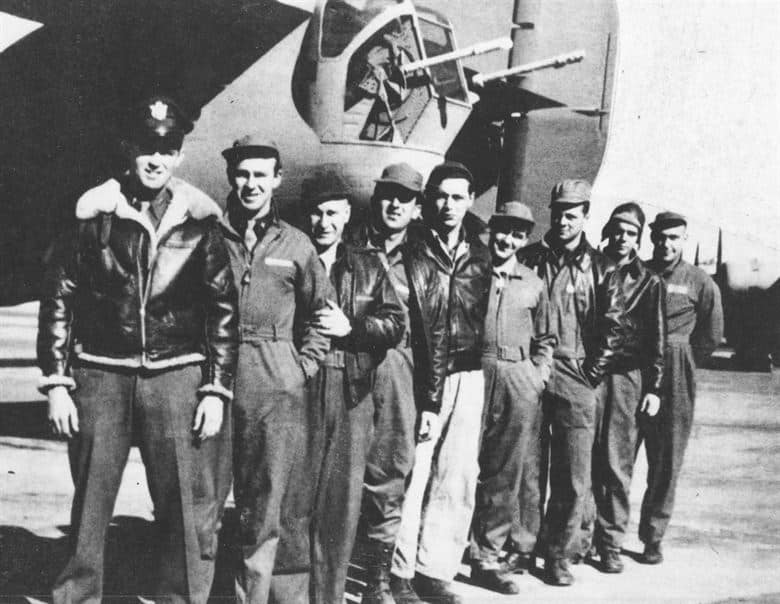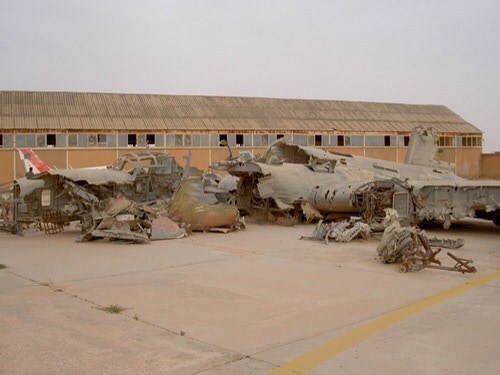Through the eerie darkness flew a lonely bomber. The four-engined behemoth gliding through the black, quiet and out of fuel. Her crew had bailed out earlier. Over an empty desert the giant soared, ever so slowly drifting lower and lower, toward the inevitable.
On April 4th, 1943, Lady Be Good, a Consolidated B-24 Liberator bomber, was returning from its first combat mission in World War II, a bombing raid on Naples. Unwittingly, the crew had strayed far off course when the automatic direction finder failed and a sandstorm hampered visibility. The crew incorrectly believed themselves to be far above the Mediterranean. Instead, they had significantly overshot the airfield and were deep over the Libyan Calanshio Sand Sea. From far above, in the dark, it would have been easy to mistake the empty dunes for rolling waves. Hundreds of miles from the nearest airbase, and with the fuel gone, the crew decided to abandon the plane and await rescue.
Instead of the Mediterranean, they found themselves lost in the desert. Their bodies would only be recovered decades later. The phantom plane flew on, a further 26 km before it too met its fate. The giant landed on its belly and tore itself apart. It would rest undisturbed for a decade and a half before its rediscovery in 1958 by British geologists who happened to fly over the wreck. When explorers reached the Lady Be Good, they found it totally empty with no trace of the lost crew. Thanks to the desert’s ability to preserve the plane and its contents, much of its internal components remained in great shape. Creepily, even the coffee/tea found in a thermos was still drinkable.
It would be another two years before her brave crew’s remains were discovered. They had survived eight days alone in the sandy emptiness, and had traveled a mind blowing 176 km (109 miles) on foot. Sadly, they were still hundreds of miles from any human settlement, and a further 400 miles from the base which had been awaiting their return.
The U.S. Air Force decided that since the condition of the plane was so good that working parts could be salvaged and used as spares for other aircraft. This would prove a grave mistake. Three planes which received spare parts from Lady Be Good fell victim to misfortune. The luckiest got away in one piece, but only after ditching cargo and making an emergency landing. Another transport plane, which had a radio from Lady Be Good, crashed into the Mediterranean. Its crew bailed out over the ocean in an eerie parallel to the situation Lady be Good’s crew faced. Finally, and most tragically, a C-47 Skytrain transport plane with parts from the vengeful wreck, disappeared completely over the Mediterranean with its entire crew. One of the few remains that was discovered happened to be an armrest bearing a serial number from the Lady. The armrest washed up on a Libyan beach, coincidentally not far from where Lady Be Good had been trying to reach that fateful night in 1943.
Eventually, the legend of Lady Be Good led to souvenir hunters seeking out her shattered remains to loot whatever could be carried. Those poor individuals may have signed their own death certificates, as peril seems to follow those who disturbed the lonely Lady. She isn’t entirely alone though, as of her nine man crew, only the remains of eight were discovered. One still rests somewhere out in the Libyan desert, protected only by the vengeful spirit of Lady Be Good.
Recently, in response to the looting of the plane’s wreckage, the Libyan government moved the plane’s remains to an airbase for protection. Parts of the crew’s equipment is now publicly displayed at the Army Quartermaster Museum at Fort Lee, Virginia. A wristwatch from the crew still works, “accurate to within 10 seconds each and every day.” Many questions still remain, foremost among them, why didn’t the crew search their plane, which held radios and survival equipment, before jumping out?
The incredible, and bizarre story of Lady Be Good captured the American imagination, and even inspired a Twilight Zone episode, “King Nine Will Not Return.” A morbid fascination remains in the collective minds of all who read about lost planes over empty deserts, and the fruitless grim wanderings of their crew. Among such stories Lady Be Good made sure she would leave a lasting impression.
Crew of the Lady Be Good
1st Lieutenant William J. Hatton, Pilot
2d Lieutenant Robert F. Toner, Copilot
2d Lieutenant Dp Hays, Navigator
2d Lieutenant John S. Woravka, Bombardier
Technical Sergeant Harold J. Ripslinger, Flight Engineer
Technical Sergeant Robert E. LaMotte, Radio Operator
Staff Sergeant Guy E. Shelley, Gunner/Asst Flight Engineer
Staff Sergeant Vernon L. Moore, Gunner/Asst Radio Operator (Still Missing)
Staff Sergeant Samuel E. Adams, Gunner
Enjoy ghost stories and this kind of a dark history? Be sure to join us on a walking tour in Kingston, Ottawa or Toronto, to discover the hidden secrets of those cities.
Written by Aviation Apparition Department Chief, Ezra Beudot




